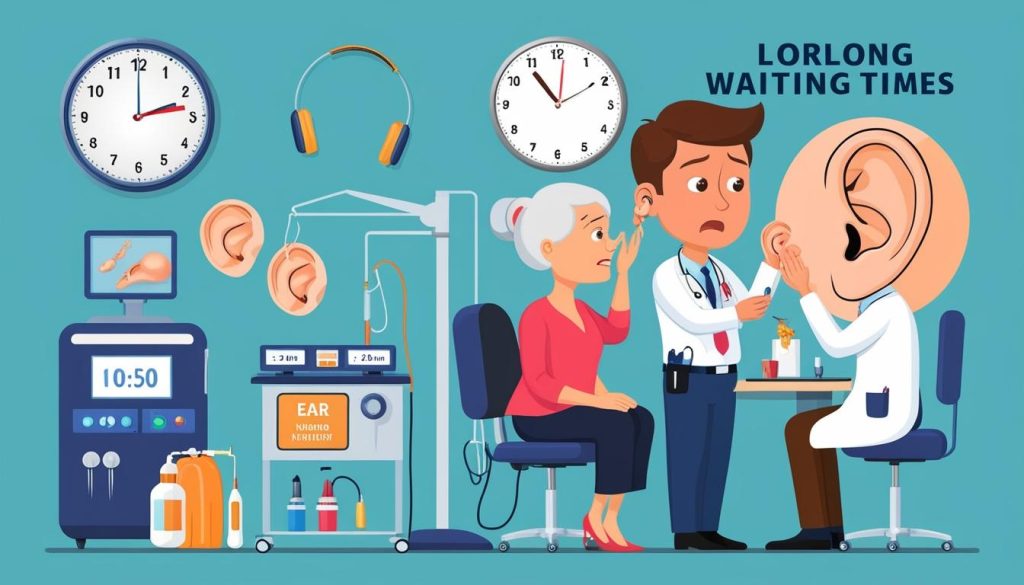**London**: The BIHIMA’s latest survey highlights pressing issues in UK audiology, including long NHS waiting times, earwax removal concerns, and staffing shortages, prompting calls for reform to enhance patient safety and service delivery in the hearing care sector.
The British and Irish Hearing Instrument Manufacturers Association (BIHIMA) has shared preliminary findings from its 2024/2025 Audiologist Survey, spotlighting significant challenges currently faced by hearing care professionals in the United Kingdom.
The annual survey is designed to gather insights from audiologists across the U.K., prompting discussion on the prevalent issues affecting hearing care delivery and identifying opportunities for improvement. Paul Surridge, Chairman of BIHIMA, noted that this year’s survey incorporated expanded questions to garner broader feedback on the sector’s ongoing challenges.
One of the main concerns raised by respondents pertains to the management of earwax removal services. Audiologists expressed worries over the lack of standardized training and the accessibility of these services, which they believe is necessary to enhance patient safety. “We need wax removal to be brought back within primary care and free for audiology patients to access,” said a survey respondent. The call for reform includes substantial criticism of current training practices which allow individuals with minimal audiology experience to operate as wax removal specialists after completing only a short course. This has raised alarm among professionals regarding the potential miscommunication of expertise to patients.
In addition to concerns regarding earwax removal, the survey revealed that long NHS waiting lists are affecting both public and private hearing care services. Currently, patients face a median waiting time of 14.5 weeks before receiving audiology services, although detailed NHS England data on audiology waiting times are reportedly not being published. “Waiting times are problematic, especially regarding referrals for further investigation of asymmetrical hearing losses and conductive issues,” a respondent remarked, underscoring that such delays hinder the progress of needed audiological interventions.
Staffing shortages and low morale within the profession have emerged as further pressing issues. Audiologists reported being overwhelmed with increasing workloads, coupled with reduced appointment times. One professional commented on the negative impact of management pressures to lower waiting lists, noting that this has led to a detrimental decrease in necessary non-clinical time used for patient-related administration. “We are losing staff frequently to the private sector, which then puts more pressure on the service,” they added, highlighting the difficulties in retaining skilled professionals in the field.
Amid these challenges, the BIHIMA survey remains open for further contributions, aiming to encourage professionals within the audiology sector to voice their thoughts and experiences. “The audiologist survey we undertake is a crucial part of the BIHIMA calendar,” Surridge stated, reinforcing the organisation’s commitment to driving positive changes that would benefit both patients and professionals in the audiology field.
The functionality of the human ear is evolutionary, designed for optimal auditory reception, and is vital not just for hearing but also for communication. Regular ear health checks are important to identify physical issues that could lead to hearing loss, which can be exacerbated by various factors such as lifestyle choices, environmental influences, and stress. Particularly during periods of global stress, such as that caused by the COVID-19 pandemic, many people have reported fluctuations in their hearing health. The role of earwax, which varies in properties across different populations, is also crucial; it not only protects the ear canal but also contributes to overall ear health when properly managed.
Safe earwax removal techniques, such as aural microsuction, have gained recognition over traditional methods, providing effective ways to clear the ear without the associated risks of syringing. This shift highlights the importance of consulting regulated hearing professionals for regular check-ups to mitigate the risks associated with improper earwax removal.
In conclusion, the findings from the BIHIMA survey provide important insights into the current state of hearing care, where earwax management, waiting times, and staffing issues pose significant challenges. The ongoing discussion surrounding these matters is pivotal in shaping the future of audiology services.
Source: Noah Wire Services





